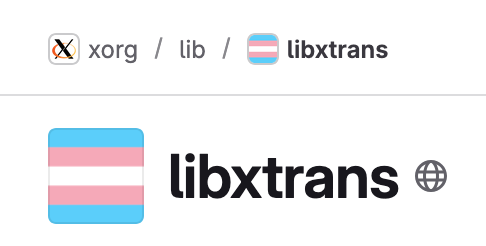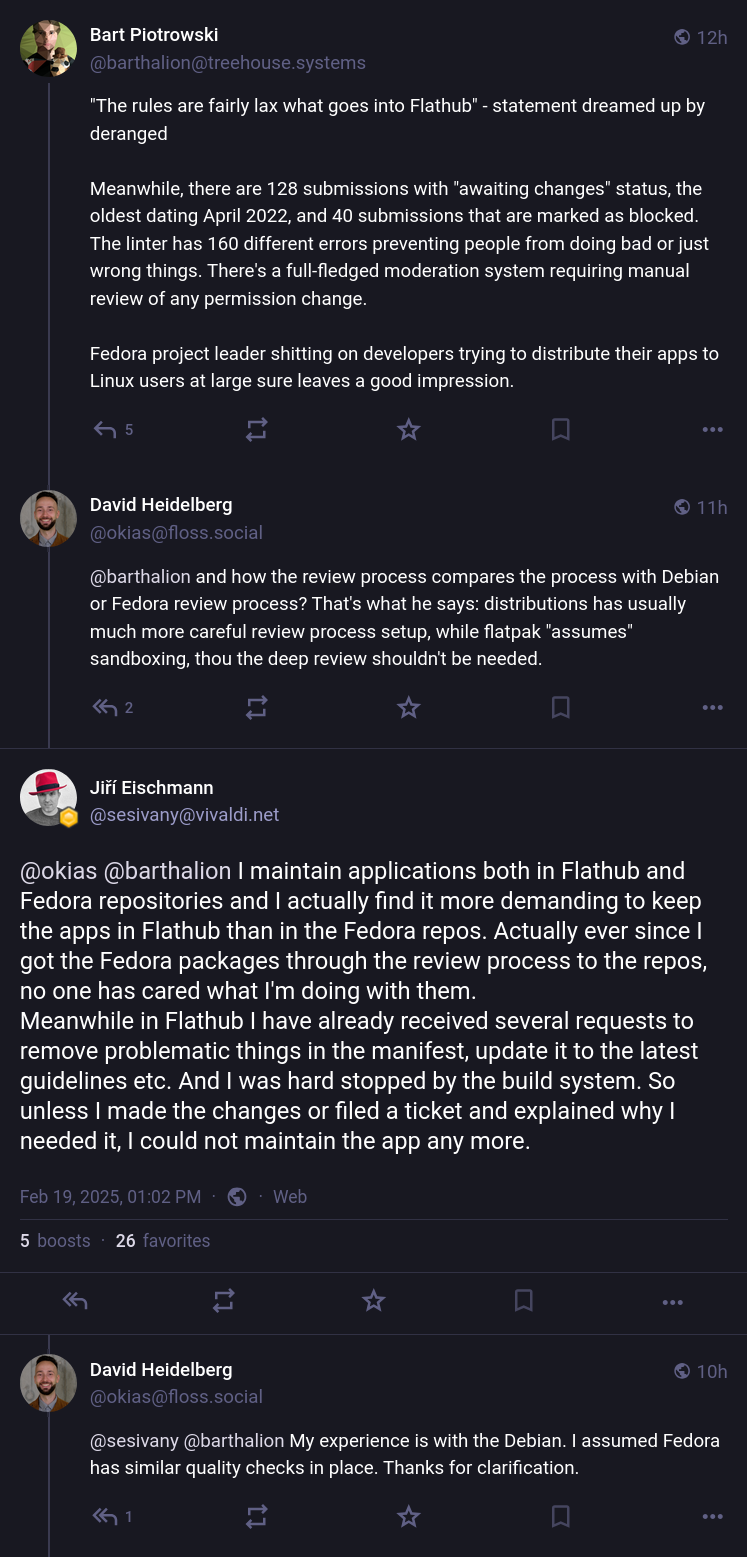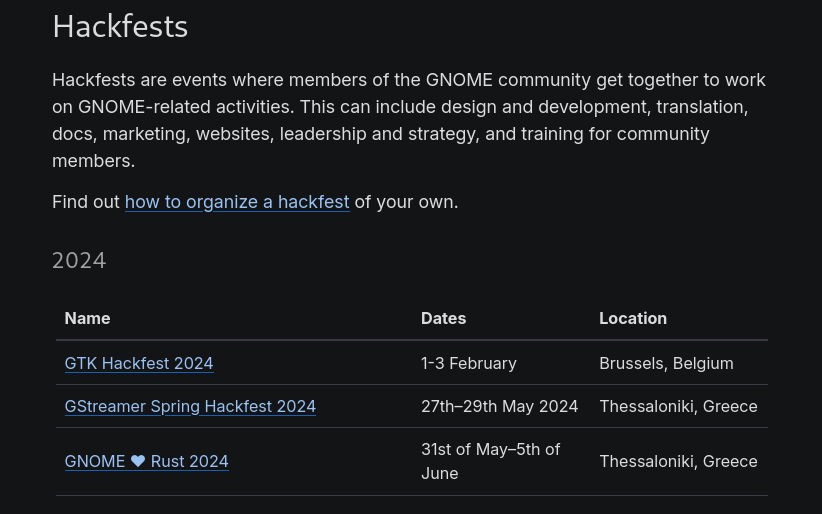Couple weeks ago Cloudflare announced it would be sponsoring some Open Source projects. Throwing money at pet projects of random techbros would hardly be news, but there was a certain vibe behind them and the people leading them.
In an unexpected turn of events, the millionaire receiving money from the billion-dollar company, thought it would be important to devote a whole blog post to random brokeboy from Athens that had an opinion on the Internet.
I was astonished to find the blog post. Now that I moved from normal stalkers to millionaire stalkers, is it a sign that I made it? Have I become such a menace? But more importantly: Who the hell even is this guy?
D-H-Who?
When I was painting with crayons in a deteriorating kindergarten somewhere in Greece, DHH, David Heinemeier Hansson, was busy with dumping Ruby on Rails in the world and becoming a niche tech celebrity. His street cred for releasing Ruby on Rails would later be replaced by his writing on remote work. Famously authoring “Remote: Office Not Required”, a book based on his own company, 37signals.
That cultural cache would go out the window in 2022 when he got in hot water with his own employees after an internal review process concluded that 37signals had been less than stellar when it came to handling race and diversity. Said review process culminated in a clash, where the employees were interested in further exploration of the topic, which DHH responded to them with “You are the person you are complaining about” (meaning: you, pointing out a problem, is the problem).
No politics at work
This incident lead the two founders of 37signals to the executive decision to forbid any kind of “societal and political discussions” inside the company, which, predictably, lead to a third of the company resigning in protest. This was a massive blow to 37signals. The company was famous for being extremely selective when hiring, as well as affording employees great benefits. Suddenly having a third of the workforce resign over disagreement with management sent a far more powerful message than anything they could have imagined.
It would become the starting point for the downwards and radicalizing spiral along with the extended and very public crashout DHH will be going through in the coming years.
Starting your own conference so you can never be banned from it
Subsequently, DHH was uninvited from keynoting at RailsConf on the account of everyone being grossed out about the handling of the matter and in solidarity with the community members along the employees that quit in protest.
That, in turn, would lead to the creation of the Rails Foundation and starting Rails World. A new conference about Rails that 100%-swear-to-god was not just about DHH having his own conference where he can keynote and would never be banned.
In the following years DHH would go to explore and express all the spectrum of “down the alt-right pipeline” opinions, like:
- Woke is so bad that it made me a racist
- People call me racist, but I found a book telling me how nice I am
- Fat people are bad and should feel bad
- DEI is bad
- DEI is bad part 2: trigger the libs with git branches
- Cheering for Affirmative action being banned in the USA
- The 80s were so great cause they were not woke
- Andrew Tate is a martyr
- Therapy is so bad, that I shall platform transphobes
- Therapy is so annoying that I’d rather make an Arch distro instead
- ADHD is not real
- Evey boy has ADHD
- Leave your work problems at therapy, instead of making it the problem of your boss (me)
- People not wanting kids are bad and Jordan Peterson nailed it
- Elon Musk and DOGE are awesome (Published 20 days after the Seig Hail)
- This private school is making my kids GAY
- London is full of “non-native Brits” and I am going to praise a race purity rally
- Words are not violence
- Words ARE violence, when they are against me
Omarchy
You either log off a hero, or you see yourself create another linux distribution, and having failed the first part, DHH has been pouring his energy into creating a new project. While letting everyone know how he much prefers that than going to therapy. Thus, Omarchy was born, a set of copy pasted Window Manager and Vim configs turned distro. One of the two projects that Cloudflare will be proudly funding shortly. The only possible option for the compositor would be Hyprland, and even though it’s Wayland (bad!), it’s one of the good-non-woke ones. In a similar tone, the project website would be featuring the tight integration of Omarchy with SuperGrok.
Rubygems
On a parallel track, the entire Ruby community more or less collapsed in the last two months. Long story short, is that one of the major Ruby Central sponsors, Sidekiq, pulled out the funding after DHH was invited to speak at RailsConf 2025. Shopify, where DHH sits in the boards of directors, was quick to save the day and match the lost funding. Coincidentally an (allegedly) takeover of key parts of the Ruby Infrastructure was carried out by Ruby Central and placed under the control of Shopify in the following weeks.
This story is ridiculous, and the entire ruby community is imploding following this. There’s an excellent write-up of the story so far here.
In a similar note, and at the same time, we also find DHH drooling over Off-brand Peter Thiel and calling for an Anduril takeover of the Nix community in order to purge all the wokes.
On Framework
At the same time, Framework had been promoting Omarchy in their social media accounts for a good while. And DHH in turn has been posting about how great Framework hardware is and how the Framework CEO is contributing to his Arch Linux reskin. On October 8th, Framework announced its sponsorhip of the Hyprland project, following 37signal doing the same thing couple weeks earlier. On the same day they made another post promoting Omarchy yet again. This caused a huge backlash and overall PR nightmare, with the apex being a forum thread with over 1700 comments so far.
The first reply in forum post, comes from Nirav, Framework’s CEO, with a very questionable choice of words:
We support open source software (and hardware), and partner with developers and maintainers across the ecosystem. We deliberately create a big tent, because we want open source software to win. We don’t partner based on individual’s or organization’s beliefs, values, or political stances outside of their alignment with us on increasing the adoption of open source software.
I definitely understand that not everyone will agree with taking a big tent approach, but we want to be transparent that bringing in and enabling every organization and community that we can across the Linux ecosystem is a deliberate choice.
Mentioning twice a “big tent” as the official policy and response to complains about supporting Fascist and Racist shitheads, is nothing sort of digging a hole for yourself so deep it that it reemerges in another continent.
Later on, Nirav would mention that they were finalizing sponsorship of the GNOME Foundation (12k/year) and KDE e.V. (10k/year). In the linked page you can also find a listing of Rails World (DHH’s personal conference) for a one time payment of 24k dollars.
There has not been an update since, and at no point have they addressed their support and collaboration with DHH. Can’t lose the money cow and free twitter clout I guess.
While I would personally would like to see the donation be rejected, I am not involved with the ongoing discussion on the GNOME Foundation side nor the Foundation itself. What I can say is that myself and others from the GNOME OS team, were involved in initial discussions with Framework, about future collaborations and hardware support. GNOME OS, much like the GNOME Flatpak runtime, is very useful as a reference point in order to identify if a bug, in hardware or software, is distro-specific or not.
It’s been a month since the initial debacle with Framework. Regardless of what the GNOME Foundation plans on doing, the GNOME OS team certainly does not feel comfortable in further collaboration given how they have handled the situation so far. It’s sad because the people working there understand the issue, but this does not seem to be a trait shared by the management.
A software midlife crisis
During all this, DHH decided that his attention must be devoted to get into a mouth-off with a greek kid that called him a Nazi. Since this is not violence (see “Words are not violence” essay), he decided to respond in kind, by calling for violence against me (see “Words are violence” essay).
To anyone who knows a nerd or two over the age of 35, all of the above is unsurprising. This is not some grand heel turn, or some brainwashing that DHH suffered. This is straight up a midlife crisis turned fash speedrun.
Here’s a dude who barely had any time to confront the world before falling into an infinite money glitch in the form of Ruby on Rails, Jeff Bezos throwing him crazy money, Apple bundling his software as a highlighted feature, becoming a “new work” celebrity and Silicon Valley “Guru”. Is it any surprise that such a person later would find the most minuscule kind of opposition as an all-out attack on his self-image?
DHH has never had the “best” opinions on a range of things, and they have been dutifully documented by others, but neither have many other developers that are also ignorant of topics outside of software. Being insecure about your hairline and masculine aesthetic to the point of adopting the Charles Manson haircut to cover your balding is one thing. However, it is entirely different to become a drop-shipped version of Elon, tweeting all day and stopping only to write opinion pieces that come off as proving others wrong rather than original thoughts.
Case in point: DHH recently wrote about how “men who’d prefer to feel useful over being listened to”. The piece is unironically titled “Building competency is better than therapy”. It is an insane read, and I’ll speculate that it feels as if someone, who DHH can’t outright dismiss, suggested he goes to therapy. It’s a very “I’ll show you off in front of my audience” kind of text.
Add to that a three year speedrun decrying the “theocracy of DEI” and the seemingly authoritarian powers of “the wokes”, all coincidentally starting after he could not get over his employees disagreeing with him on racial sensitivities.
How can someone suggest his workers read Ta-Nehisi Coates’s “Between the World and Me” and Michelle Alexander’s “The New Jim Crow” in the aftermath of George Floyd’s killing and the BLM protests. While a couple of months later writing salivating blogposts after the EDL eugenics rally in England and giving the highest possible praise to Tommy Robinson?
Can these people be redeemed?
It is certainly not going to help that niche celebrities, like DHH, still hold clout and financial power and are able to spout the worst possible takes without any backlash because of their position.
A bunch of Ruby developers recently started a petition to get DHH distanced from the community, and it didn’t go far before getting brigaded by the worst people you didn’t need to know existed. This of course was amplified to oblivion by DHH and a bunch of sycophants chasing the clout provided by being retweeted by DHH. It would shortly be followed by yet another “I’m never wrong” piece.
Is there any chance for these people, who are shielded by their well-paying jobs, their exclusively occupational media diet, and stimuli all happen to reinforce the default world view?
I think there is hope, but it demands more voices in tech spaces to speak up about how having empathy for others, or valuing diversity is not some grand conspiracy but rather enrichment to our lives and spaces. This comes hand in hand with firmly shutting down concern trolling and ridiculous “extreme centrist” takes where someone is expected to find common ground with others advocating for their extermination.
One could argue that the true spirit of FLOSS, which attracted much of the current midlife crisis developers in the first place, is about diversity and empathy for the varied circumstances and opinions that enriched our space.
Conclusion
I do not know if his heart is filled with hate or if he is incredibly lost, but it makes little difference since this is his output in the world.
David, when you read this I hope it will be a wake-up call. It’s not too late, you only need to go offline and let people help you. Stop the pathetic TemuElon speedrun and go take care of your kids. Drop the anti-woke culture wars and pick up a Ta-Nehisi Coates book again.
To everyone else: Push back against their vile and misanthropic rhetoric at every turn. Don’t let their poisonous roots fester into the ground. There is no place for their hate here. Don’t let them find comfort and spew their vomit in any public space.
Crush Fascism. Free Palestine ✊.





